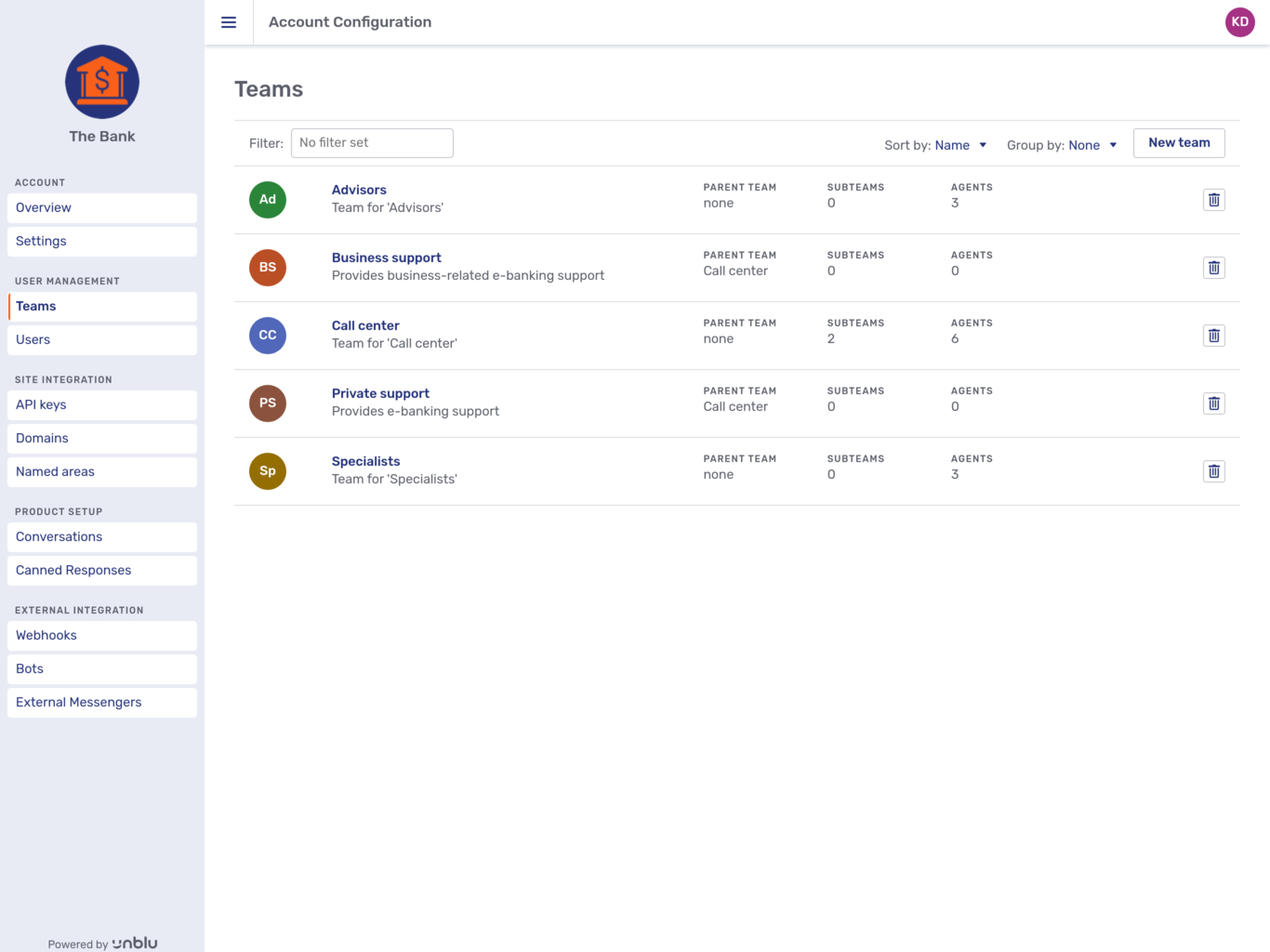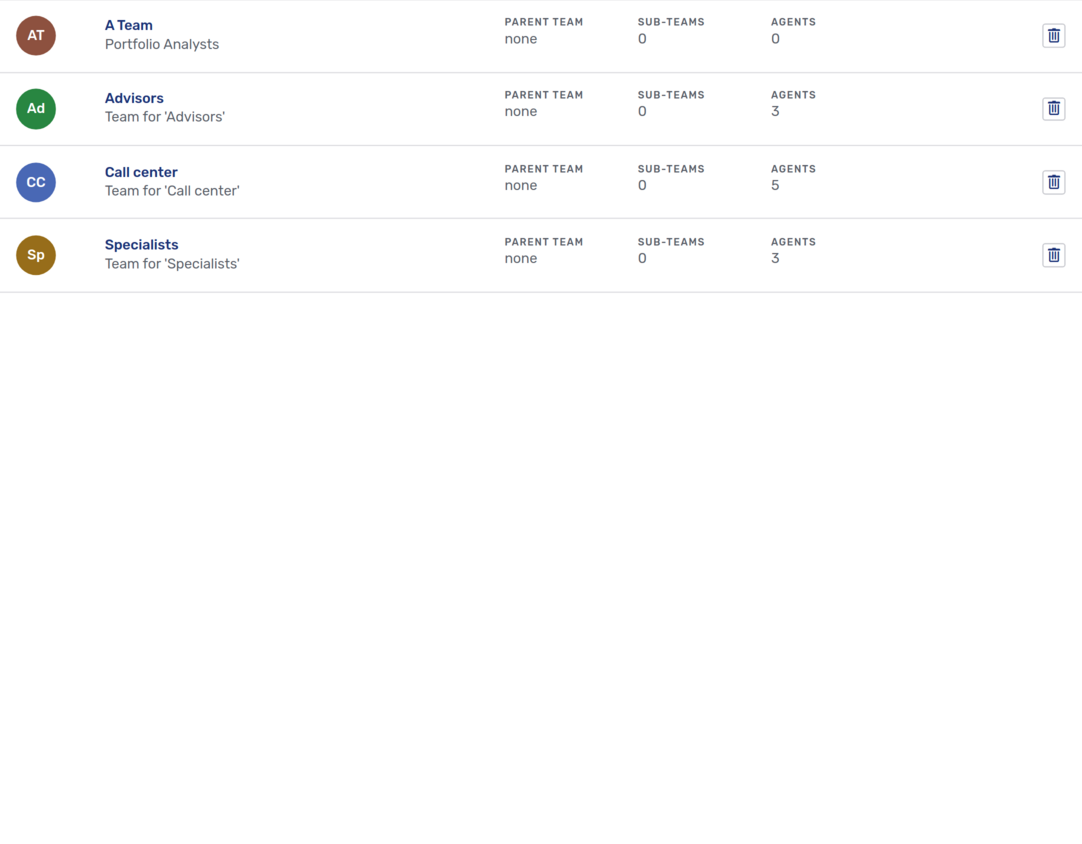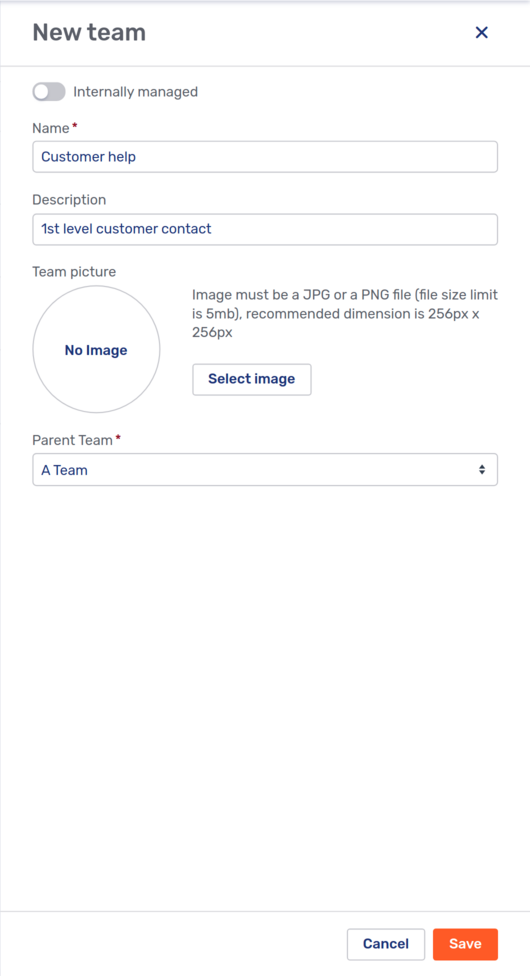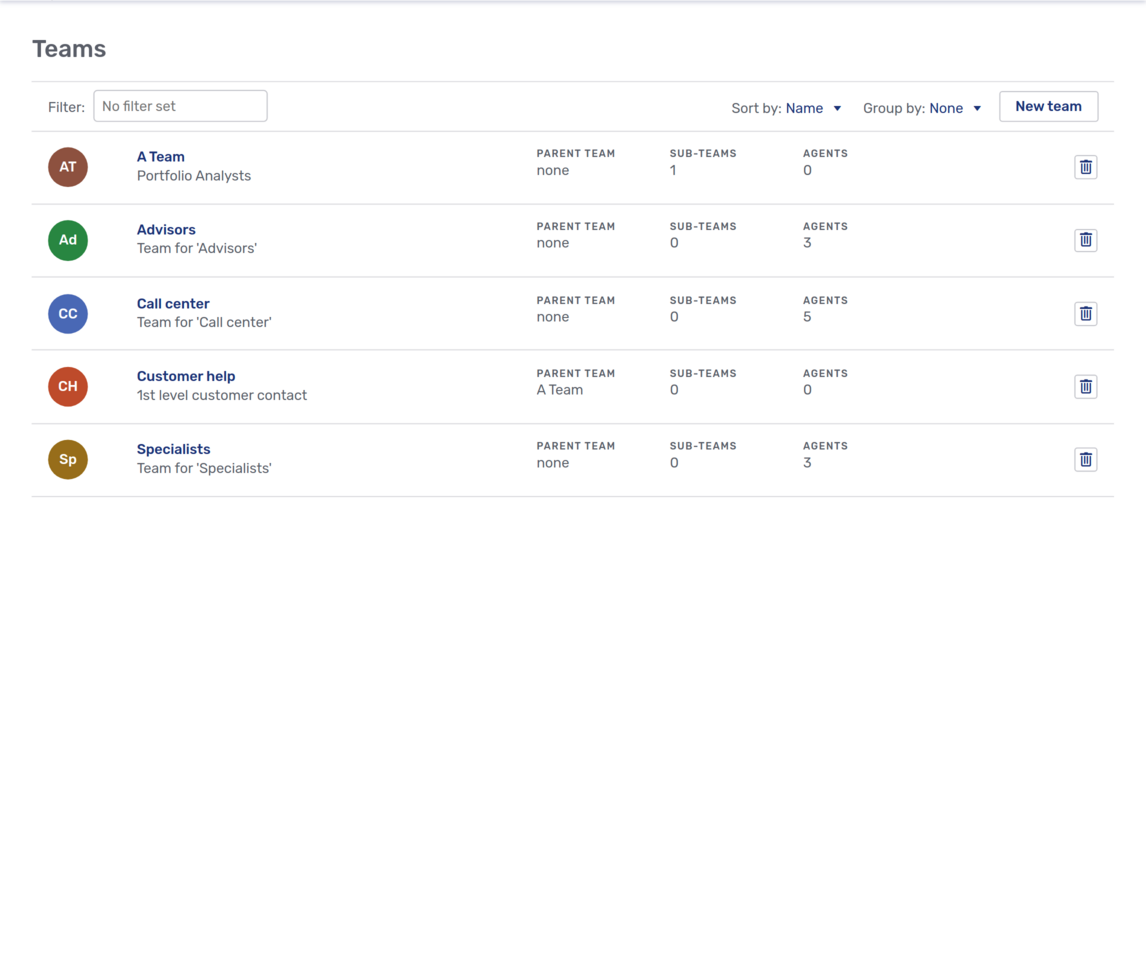|
This document describes version 6 of Unblu. If you’re using the latest major version of Unblu, go to the documentation of the latest version. The support period for version 6 ended on 29 August 2023. We no longer provide support or updates for this version. You should upgrade to the latest version of Unblu. |
Creating agent teams
This article describes how to create teams and subteams.
To create teams you must have at least admin user rights. Furthermore, you will only be able to create new teams if they are not externally managed, or if you have the authorization to override external team management.
Creating a top-level team
-
In the sidebar, select Teams. This displays the Teams overview.

-
Click on the New team button to display the New team modal page.

-
Add a name such as "A Team" and a description for the team in the corresponding fields.
-
In the Parent Team drop-down list, select none.
-
When you are done defining the team, click Save. This will close the modal page, and the Teams overview page will now include your new team.

Creating a subteam
-
As before, click on the New team button.
-
When the modal page slides in, fill in the fields as required.
-
Specify that the new team is a child of "A Team", the team we defined in the previous section. To do so, select "A Team" from the Parent Team drop-down list.

-
Click on Save. The new team ("Customer help" in our example) will appear in the Teams overview, and you can see that "A Team" is listed as its parent team.

The "Customer help" team will inherit the settings of its parent team. You can override the inherited settings by changing them on the new team’s Settings tab.
Further information
You can create at most 150 teams in Unblu. This number includes top-level teams and subteams.
If you have to set up a large number of teams, you might prefer to do so using the Web API. Please refer to the Web API documentation for further details.